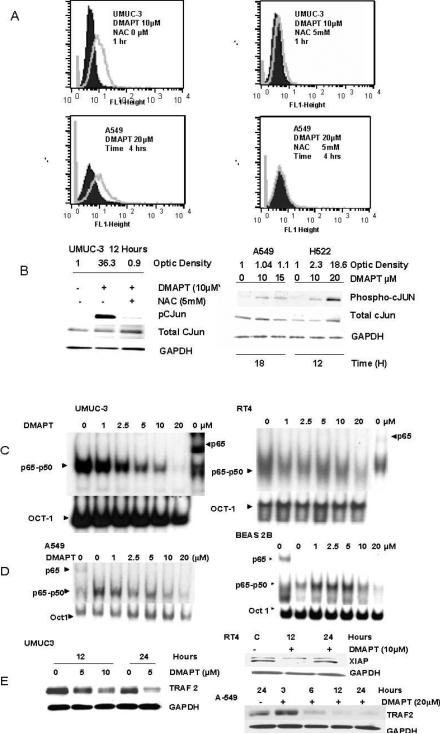Figure 1. DMAPT generates reactive oxygen species (ROS) and inhibits Nuclear factor kappa B in both lung and urothelial cell lines.
(A) Flow cytometric analysis using 2, 7-dichlorohydrofluorescein diacetate (H2DCFDA dye) detailed the ability of DMAPT to generate ROS, which was blocked by N-acetyl cysteine (NAC) in UMUC-3 cell (upper panel) and A549 cells in (lower panel). The solid peaks are a control representing baseline ROS levels and grey peaks represent amount of ROS after exposure to drug treatment. (B) Western blotting demonstrated DMAPT treatment resulted in phosphorylation of c-Jun in both TCC (UMUC-3) and NSCLC (A549 and H522) cell lines. As observed in the left hand panel, this was substantially suppressed by pre-treatment with NAC in the UMUC-3 cell line. In the right hand panel it is noted the phosphorylation of cJUN was dose dependent in H522. (C and D) Electrophoretic mobility gel shift assays (EMSA) demonstrated constitutive NFκB DNA binding in all of the cell lines with the p65-p50 label indicating the location of this heterodimer. The presence of the most active NFκB subunit, p65, in the DNA-protein complex of both NSCLC and TCC cell lines was confirmed by a supershift with a p65 antibody. This is delineated in the last column of UMUC-3 and RT4 and the first column of A549 and BEAS2B EMSA figures. When the NFκB dimer complexes from the no DMAPT columns are compared, the location of the p65 dimer in the heterodimer complexes can be discerned. DMAPT's ability to inhibit NFκB DNA binding after 3 hours of treatment in UMUC-3 and RT4 (C) and A549 and BEAS2B (D) cell lines is shown to be dose dependent. (E) Western blotting revealed DMAPTs ability to decrease NFκB dependent proteins: TRAF-2 in UMUC-3 (left panel) as well as XIAP in RT4 and TRAF2 in A549 cells (right panel).

